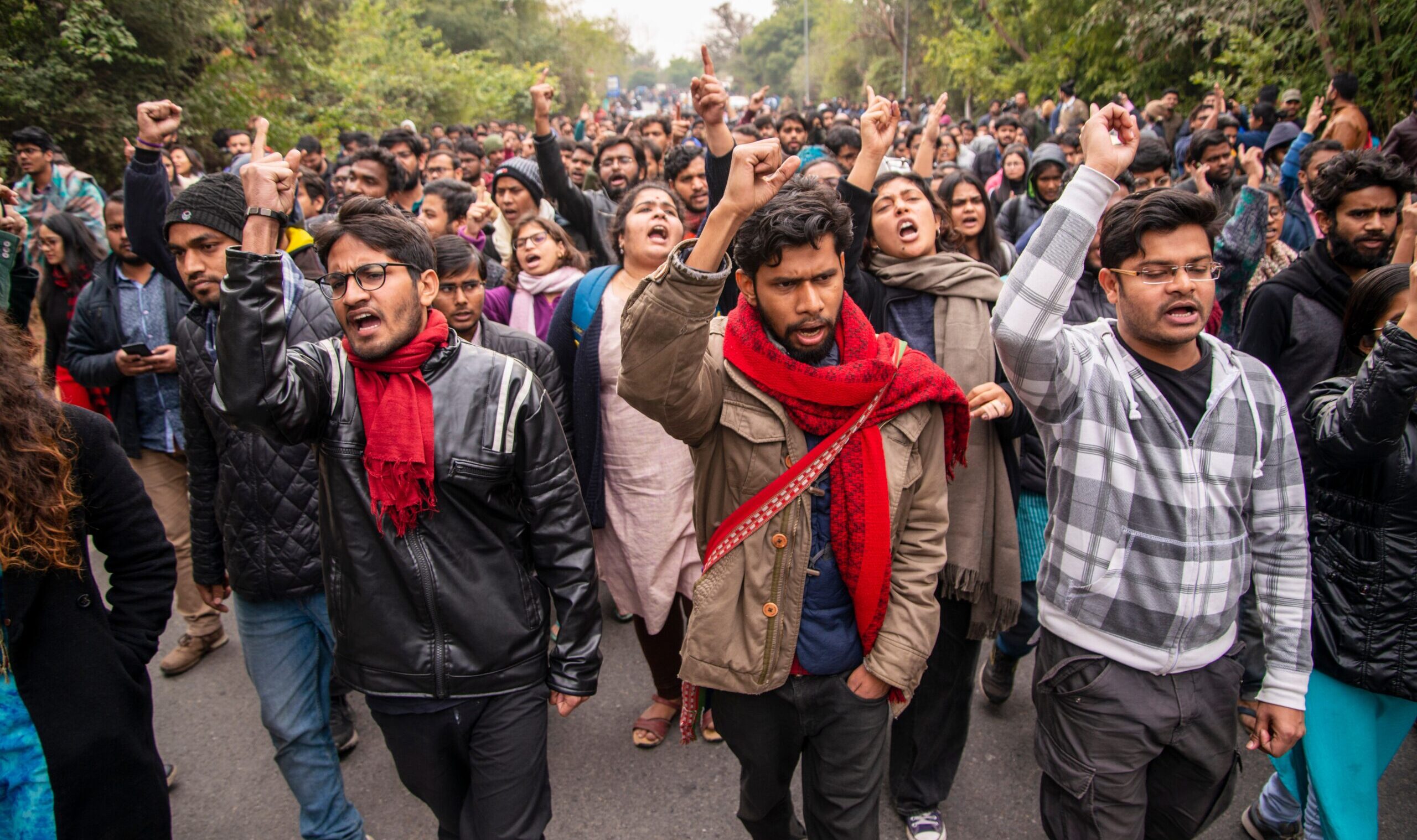An Indian Precedent for American Upper Middle Class Radicalism
Americans should read more about the Naxalite movement. There are echoes of the past in current American left-wing activism.

A man accused of firebombing an anti-abortion lobby group office last year in Madison, Wisconsin pleaded guilty to the crime and was sentenced to seven and a half years in prison. A PhD biochemist by profession and researcher at U-Madison, Hridindu Sankar Roychowdhury apparently started the pro-abortion group “Jane’s Revenge” and used his connections and grant money to gather incendiary chemicals to create the device he used to firebomb the office. He has also, according to reports, been uncooperative with the federal agents, and has been speaking to Antifa and “Stop Cop City” comrades in prison. He was indicted for RICO violations, terrorism, and money-laundering charges. Before the bombing, he threatened that “if abortions aren’t safe then you aren’t either.” He was identified from a half eaten burrito at the terror scene, and was nabbed while trying to flee the country for Latin America.
It is an interesting case with several layers. Even a man who has a PhD in biochemistry apparently isn’t wise enough to not throw a half-eaten saliva-covered burrito at the crime scene. Being intelligent isn’t the same as being wise or prudent; a data point in the case-study against the “cult of expertise” that runs in this country. Universities also should be far more strict about whom they let in. The job of academia is not to allow just about everyone to aim for the upper echelons of society, but to promote merit towards the betterment of the nation. One can make the case of more, not less gate-keeping in higher-education.
But the arrest of this man also provides a historical lens to look at a very strange form of insurgency that is now haunting America. The American understanding of left-wing radicalism is steeped in its formative years in the 1930s, the labor unions, and the Cold War against the USSR. Leninism is what most Americans think of when they imagine left-wing radicalism. Only in recent years have intellectuals and scholars started to talk more about Antonio Gramsci and “the long march through the institutions.”
But there is a precedent in what we are seeing in America now. The early 1970s Naxalite movement in India was fundamentally decentralized; compared to other grassroots peasant or worker led communist movements across Europe and Asia, it was dominated by upper-middle class college students. The core of the movement was Calcutta University, one of the oldest and most prestigious Indian schools, but the movement had different rhetoric and local policies depending on where it was operating. Similar to the modern iteration of Antifa, it wasn’t centralized; it was based in different states; it never had a consolidated information center or coordinated action plan, it combined different splintered groups; it had medical, assault, and scouting groups; and it organized via hand-to-hand communications across state lines.
Most importantly, it was heavily upper-middle class, with students often using their parents or sympathetic university professors for bail money, sometimes aided by lenient local attorneys and laws. Although the movement had broad shared ideological commitments about “class enemies,” it never had a party line, and therefore most terrorist actions were against local businesses, mom-and-pop stores, small landlords, and the hapless homeguards and beat cops walking the roads at night.
But it showed what impotent and repressed middle-class bloodlust against both upper and lower class of society is, and how deadly it can be. The Naxalites never truly threatened the existence of the republic of India, nor did they much harm the rich in the 1970s India, who could afford private security and militias. But it made the life of those commoners who pay tax expecting to be protected by the state an absolute hell.
Subscribe Today
Get daily emails in your inbox
The moment it appeared that Beijing was even rhetorically sympathetic to a Maoist insurgency within India, the state cracked down with a ferocity that became a byword of counterinsurgency studies. Hundreds of diehard students simply disappeared without a trace. But most of the normies, mellowed out after a thorough beating (and after their parents were bankrupted paying bail funds). The public opinion shifted rapidly against the needless violence of the Naxalite groups against individuals they considered to be “class enemies.” As often is the lesson of history, most pretend revolutionaries don’t survive a dedicated reaction. Violence goes both ways.
The most haunting paragraph from one of the greatest series of novels written about that era, the Bengali polymath and author Samaresh Majumdar’s “Animesh Quartet,” shows a police officer lamenting to another that the items found during the raid in a commune were some revolutionary literature and a whole bunch of unused condoms. The Naxalites were a weird mix of wasted upper-middle-class students who fancied themselves Che Guevaras in a movement that was itself a weird mix of the Parisian 1968ers and the Maoist Red Guards.
For the uninitiated, Roychowdhury is an Indian and Bengali surname denoting “landlord,” an acquired title that originates from the Mughal era and was continued by the British. Somewhere in the past, this chap’s forefathers formed the backbones of two empires. Like most modern descendants of older elites, this man, born with perhaps above average intelligence, decided to ruin his above average life for momentary nihilism in the cause of a rudderless movement dedicated to a heady mix of hedonism, impotent rage, and violence. As a philosopher of our time once noted, “Many such cases. Sad!”